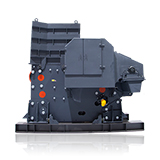What is the Production Capacity of Cone Crusher?
Cone crushers are essential pieces of equipment in the mining and aggregate - processing industries. They are widely used for secondary and tertiary crushing, playing a crucial role in reducing the size of rocks and ores to meet specific product size requirements. The production capacity of a cone crusher is a key factor that determines its efficiency and suitability for different projects.
ZENITH offers a range of high - quality cone crushers, including the HST Single Cylinder Hydraulic Cone Crusher, HPT Multi - cylinder Hydraulic Cone Crusher, and S Spring Cone Crusher. This article provides an in-depth discussion of the production capacity of cone crushers, exploring the influencing factors, methods of optimization, and the role of technological advancements in boosting performance.
Production Capacity of ZENITH's Cone Crushers
ZENITH provides HST Single Cylinder Hydraulic Cone Crusher, HPT Multi - cylinder Hydraulic Cone Crusher, and S Spring Cone Crusher, These crushers are designed to meet different production requirements, with the HST and HPT models offering higher - end performance and production capacities, while the S Spring Cone Crusher provides a more traditional yet reliable option.
1. HST Single Cylinder Hydraulic Cone Crusher
- Capacity: 27-2185t/h
- Max. Input Size: 560mm
- Min. Output Size: 4mm
The HST Single Cylinder Hydraulic Cone Crusher is a high - performance model from ZENITH. It is designed with advanced hydraulic technology, which provides several advantages in terms of production capacity.
This crusher can handle a wide range of feed sizes, typically from 4 mm to 560 mm, depending on the specific model. Its production capacity varies significantly based on the application and the setting of the discharge opening. In general, for medium - hard materials such as limestone, the HST Single Cylinder Hydraulic Cone Crusher can achieve a production capacity ranging from 27 tons per hour to 2185 tons per hour.
The single - cylinder hydraulic system allows for easy adjustment of the discharge opening, which can be quickly adjusted to meet different production requirements. This flexibility, combined with its high - speed crushing action and efficient crushing chamber design, enables it to maintain a relatively high production capacity while ensuring product quality.

2. HPT Multi - cylinder Hydraulic Cone Crusher
- Capacity: 45-1200t/h
- Max. Input Size: 350mm
- Min. Output Size: 6mm
The HPT Multi - cylinder Hydraulic Cone Crusher is another top - of - the - line product from ZENITH. It features a multi - cylinder hydraulic system that provides stable and reliable operation.
The HPT series can handle feed materials with sizes ranging from 6 mm to 350 mm. When it comes to production capacity, it outperforms many traditional cone crushers. For hard materials like granite, the HPT Multi - cylinder Hydraulic Cone Crusher can have a production capacity of 45 tons per hour to 1200 tons per hour.
The multi - cylinder design distributes the crushing force more evenly, reducing the wear on the crushing components and allowing for higher - speed operation. This results in a higher production capacity while maintaining consistent product quality. The hydraulic system also enables quick and accurate adjustment of the discharge opening, further optimizing the production capacity according to different needs.

3. S Spring Cone Crusher
- Capacity: 27-1400t/h
- Max. Input Size: 369mm
- Min. Output Size: 3mm
The S Spring Cone Crusher is a classic and reliable model in ZENITH's product line. It uses a spring - loaded system for overload protection, which is a proven and effective design in cone crushers.
The feed size range for the S Spring Cone Crusher is usually from 3 mm to 369 mm. Its production capacity is suitable for a wide variety of applications. For materials with medium hardness, such as dolomite, the S Spring Cone Crusher can achieve a production capacity of 27 tons per hour to 1400 tons per hour.
The spring - loaded system not only provides overload protection but also helps to maintain a stable crushing force. This, along with its well - designed crushing chamber, ensures a relatively stable production capacity. Although it may not have the same level of advanced hydraulic features as the HST and HPT models, it still offers a cost - effective solution with reliable performance and a reasonable production capacity for many crushing applications.

Factors Affecting the Production Capacity of Cone Crushers
Several factors interact to determine how much material a cone crusher can process efficiently.
1. Crusher Design and Size
The geometry of the crushing chamber and the physical dimensions of the cone crusher strongly affect capacity.
- Head Diameter: Larger head diameters allow for higher throughput.
- Cavity Design: Steeper angles and optimized profiles improve material flow and increase capacity.
- Stroke Length: A longer stroke increases crushing force and enhances throughput.
2. Eccentric Speed
The eccentric speed defines how quickly the crushing head gyrates inside the chamber. Higher eccentric speeds generally lead to higher capacity but may also increase wear. Optimizing this balance is crucial for efficient operations.
3. Closed Side Setting (CSS)
CSS refers to the smallest distance between the crushing head and the concave liner.
- Smaller CSS: Produces finer material but may reduce overall capacity.
- Larger CSS: Increases throughput but may sacrifice product quality.
Finding the right CSS is essential for balancing capacity and output gradation.
4. Material Characteristics
The properties of the feed material greatly impact capacity:
- Hardness and Abrasiveness: Harder materials require more crushing energy, lowering throughput.
- Moisture Content: Excess moisture causes material to stick, clogging the chamber.
- Particle Size Distribution: Evenly graded feed improves capacity, while oversized lumps reduce efficiency.
5. Feed Presentation
How material is fed into the cone crusher matters:
- Choke Feeding: Keeping the chamber full ensures higher throughput and better shape.
- Uneven Feeding: Leads to reduced capacity, uneven wear, and potential damage.
6. Liner Condition
Wear on the mantle and concave reduces chamber volume and alters crushing dynamics. As liners wear, capacity gradually decreases until they are replaced.
7. Circuit Configuration
The position of the cone crusher within a crushing circuit influences capacity.
- Closed-Circuit Systems: Include screening and recirculation, maintaining consistent product size.
- Open-Circuit Systems: May achieve higher throughput but with less control over gradation.
Methods to Optimize Cone Crusher Capacity
1. Proper Feed Control
- Ensure choke feeding to maintain chamber pressure.
- Use feeders and level sensors to achieve consistent material flow.
2. CSS Optimization
- Adjust CSS according to product requirements and material type.
- Regularly monitor CSS as it changes with liner wear.
3. Efficient Screening
- Integrate high-performance screens to remove fines before crushing.
- This prevents chamber overloading and boosts net capacity.
4. Regular Maintenance
- Replace worn liners promptly to maintain chamber geometry.
- Keep bearings, lubrication, and hydraulic systems in good condition.
5. Use of Automation
Modern cone crushers are equipped with automation systems that:
- Monitor operational parameters in real time.
- Automatically adjust CSS and eccentric speed.
- Predict maintenance needs.
Automation maximizes capacity while reducing downtime.
6. Upgrading Equipment
Older cone crushers can be retrofitted with new liners, upgraded control systems, or optimized eccentric speeds to boost capacity without investing in entirely new equipment.
The production capacity of a cone crusher is a dynamic parameter shaped by design, operational settings, and material characteristics. It is influenced by factors such as crusher size, eccentric speed, CSS, feed properties, liner wear, and circuit configuration. Understanding these variables is critical for selecting the right equipment, planning production, and optimizing performance.







